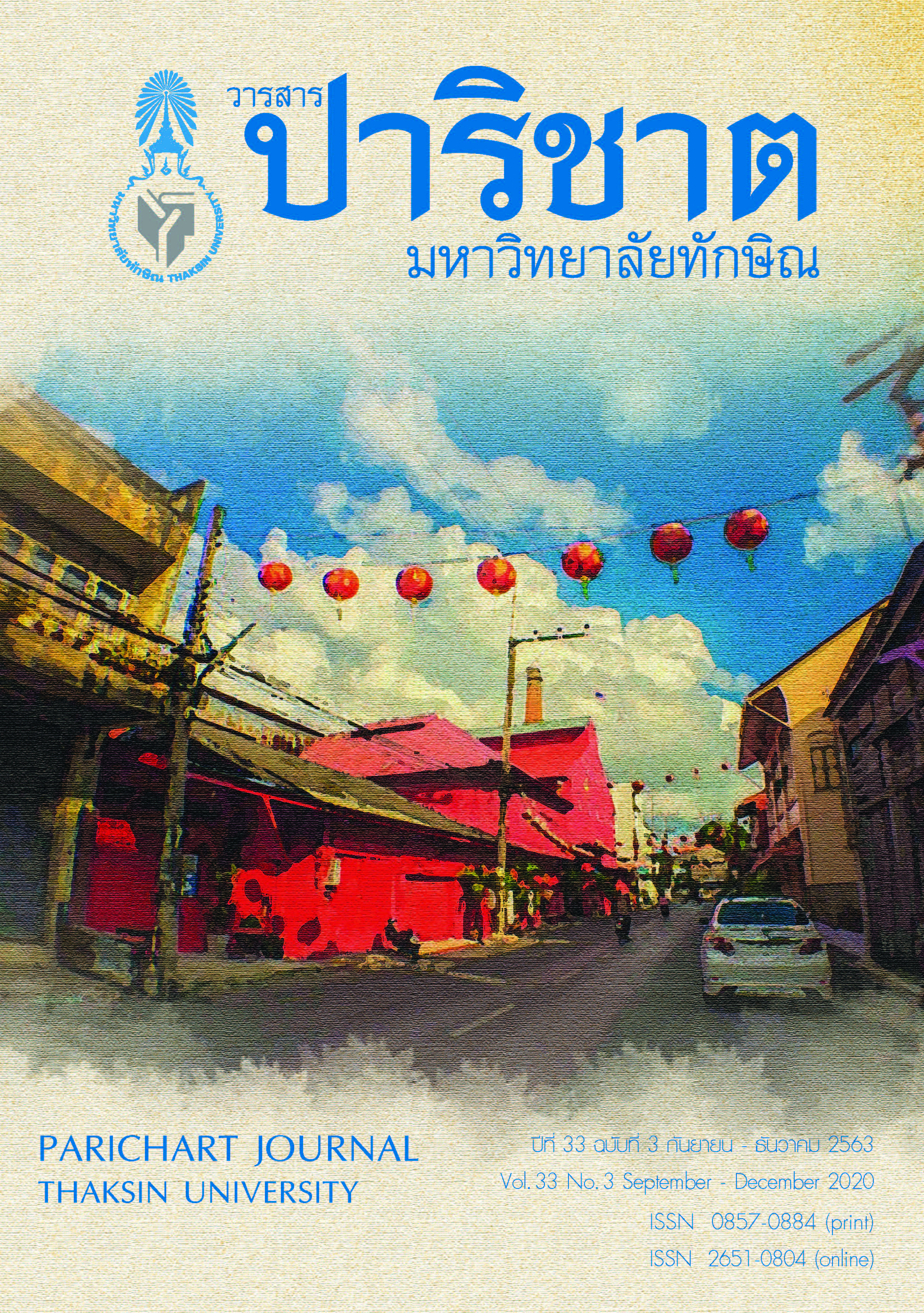“Niak-Naka” An Original Pattern on Mudmee Silk of Thai-Khmer People in Surin Province (เนี๊ยคเรี๊ยด : นาคราช) อัตลักษณ์เชิงศิลป์บนผืนไหมบริบทวัฒนธรรมกลุ่มคนไทย เชื้อสายเขมรเมืองสุรินทร์
Main Article Content
Abstract
The article named “Niak-Naka” an original pattern on Mudmee silk of Thai-Khmer people in Surin province. The article aims to present important and connecting history between Surin, Thai-Khmer people, traditional beliefs, Mudmee silk handicraft, and beliefs of Naga “traditional cultural pattern on Mudmee silk, the transmission of cultural symbols conceptual communication of Thai-Khmer weavers. The results of the study showed that silk handicrafts are like tools to pass on cultural symbols through women through instruction, socialization, absorption, and enculturation from mother to child compared to passing on symbols of thought, belief, values, including the ideas, belief, meaning of the ritual which came from the traditional beliefs that affected the way of life of Thai-Khmer people in Surin province. Therefore, the Naga symbol is the media to present the 3 worldviews reflected by Thai-Khmer weavers. 1) The symbol of traditional belief 2) The symbol represented the idea of the weavers based on the cultural and art design, and 3) The symbols of cultural meaning. Naga symbol is Thai-Khmer wisdom that using to communicate by teaching to their children. Naga in Mudmee silk is hidden as the abstract wisdom through traditional belief like the set of thought pattern which ancestor use to convey by absorbing, teaching through women as using a cultural belief as a tool for cultivating the social values, they respected and practiced so they are expressed in practice (Do’s and don’ts) for living and teach the children to follow in the social tradition of Thai-Khmer people.
Article Details
References
Klangrit, S. (2016). Naga: S symbolic dimension of identical relations. Hatyai Academic Journal. Hatyai University, 15(2), 4-6.
Office of the National Culture Commission. (2004). Ethnological map of Thailand. Retrieved from: https://en.wikipedia.org/wiki/Demographics_of_Thailand.
Panurat et al. (1996). San-ga : A Khmer marriage tradition in South Isan.Surin art and culture center.
Pongsapit, A. (1993). Culture, religion, and race: The analysis of Thai society by anthropological approach. Bangkok: Chulalongkorn University.
Muenjanchoei, R. (1999). The influences of the Thai Song’s beliefs, traditions, and rituals on Life quality development (Master of arts thesis in rural development studies), Nakhon Pathom: Mahidol University.
Wikimedia. (2009). Thailand Surin locator map. Retrieved from: https://commons.wikimedia.org/wiki/File:Thailand_Surin.
Seidenfaden, E. (1970). Ethic group study series minority group in Thailand. Nebraska: University of Nebraska-Lincoln.
Siriprapaporn, Y. (2016). The relational analysis of Mamuad Séance’s teachings and Buddhist principles of Thai-Khmer ethnic groups in Surin province and Buriram Province (Doctor of Philosophy in Buddhism Studies), Surin : Mahachulalongkornrajavidyalaya University.
Keasemsukcharutsaeng, S. (1983). The Cultural mix of the Lao Song or Thai Song.Surin : Surindra Rajabhat University.
Chimmalee, B. (2007). The culture of clothing of Kuy indigenous group in Thailand. Surin : Surindra Rajabhat University.
Sapphaya, W. (2009). The belief in Naga in Mekong river region. Bangkok: Saengthong Press.
Maiondee, R. (10 August 2010). Weaver. Khwao Sinrin, Amphoe Khwao Sinrin, Surin province.
Klangrit, S. (2016). The patterns and teachings of Surin’s Pra-Guam silverware (Master degree thesis in rural development research), Surin: Surindra Rajabhat University.
Sujit Wongted. (2000). Naka in the Southeast Asia history. Bangkok: Matichon.
Wongwai, B. (10 August 2010). Weaver. Ban Danjarean, Tambon Kratiam, Amphoe Sangkha, Surin province.
Yaepdee, A. (10 August 2010). Weaver. Ban Khwao Sinrin.
Wetsiriyanan, T. (2005). Khmer ethnic group’s wisdom of silk in Ban Tha Sawang, Amphoe Muang, Surin province. Surin : Surindra Rajabhat University.


